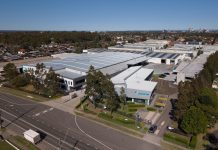
Media Release
COVID-19 has brought the importance of Australian supply chains to the fore. As overseas supply chains came to a halt, industries here were significantly impacted as supplies depleted. This prompted the government to consider an initiative that could sustain local manufacturing.
The $1.5 billion Modern Manufacturing Strategy was announced in the 2020-2021 federal budget. The Australian government is also providing a further tax incentive that will write off the value of assets for businesses, with more information yet to be released.
The funding aims to give the manufacturing industry a chance to reinvigorate and innovate. Manufacturers are encouraged to implement cost-effective practices, which will give smaller manufacturers the opportunity to improve efficiency and competitiveness.
The funding will modernise factories, increase exports, and secure a sovereign capability across six priority sectors, including: resources technology and critical minerals; food and beverage; medical products; clean energy and recycling; defence; and space.
Taking advantage of the funds, Australian manufacturers can improve operations and increase opportunities with new technology, like robotics and 3D printing, according to Konica Minolta.
Using robots to innovate offers many advantages to various activities for manufacturers. Two significant benefits include:
1. Improving warehouses or factory operations. Employees spend a significant amount of time moving goods around the warehouse or factory. Autonomous mobile robots (AMRs) automate the transportation of pallets and heavy loads and can streamline up to 46 per cent of routine tasks. [2] By taking people off manual tasks and using a robot instead, employees can be deployed to areas of more value.
Martin Keetels, national manager – emerging technologies, Konica Minolta, said, “For companies in a position to set up a new warehouse, implementing a robotic system will provide an almost immediate return on investment (ROI). However, companies with existing facilities don’t have to redesign to automate; instead, they can use robots that can map out factory floors and operate within existing frameworks.”
2. Increasing the output of factories and ROI. Robots can automate supply chain operations and speed up the overall manufacturing process. Employees can focus on increasing the output of the factory, rather than manual tasks, as robots provide ROI for resources, time management and costs. Faster manufacturing will create an Australian industry that can compete with cheaper overseas counterparts.
Implementing 3D printing into the manufacturing process provides a range of advantages to businesses. Four significant benefits include:
1. Retaining supply chain control. In the last decade, many supply chains have shifted to overseas factories and, as a result, supply and stocks depleted to concerning levels during COVID-19. Australia felt the burden of not having solid supply chains anymore.
Matthew Hunter, innovation product marketing manager, Konica Minolta, said, “For some companies, moving all manufacturing processes back to Australia may not be a viable solution. However, 3D printing of at least some components can potentially offset the risk posed by supply chains and fully switch over some parts that can be controlled here. By using 3D printing for operations, manufacturers can come back online faster if overseas supply is delayed.”
2. Developing Australian intellectual property. Intellectual property (IP) is important for Australian supply chains to continue exporting. IP that is produced from overseas can affect other countries buying Australian-made goods and products. 3D printing plays a large role in the development of prototypes and goods, helping to maintain and improve Australia’s IP.
3. Improving cost effectiveness for bespoke manufacturing. Manufacturers for specific sectors, such as aerospace and defence, often produce bespoke products customised to customer’s needs. Using 3D printing can make short-run processes like these more cost effective.
4. Advancing small business competitiveness. Smaller manufacturers can take advantage of 3D printing to make their processes more efficient and practices more cost effective. This can help smaller manufacturers become more competitive in the market.
Martin Keetels, said, “Overall, the government initiative will bring change to the Australian manufacturing industry. It will provide businesses with the opportunity to innovate and incorporate new technology into processes, such as robotics and 3D printing, and improve efficiency and costs.”
Image credit: www.konicaminolta.com.au


















